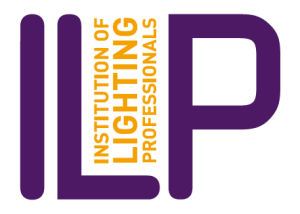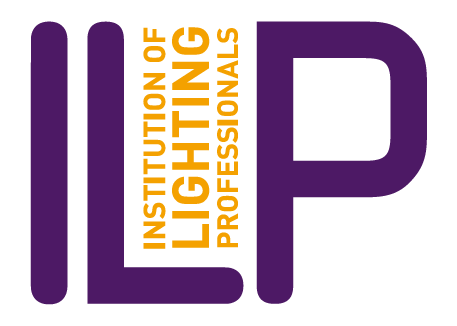One of the limitations on the rapid roll out of in-column EV charging points is confusion over the need for UMSUG codes. The lighting industry needs clarification on this if deployments are going to happen at sufficient pace to support net zero targets.
By Tim Barker
For a multitude of historical reasons, the UK has some of the oldest housing stock in western Europe. It also has a predominance of on-street parking; for some two-thirds of dwellings, this is the only option.
This presents challenges for electric vehicle (EV) charging, as for many people there is a lack of access to dedicated off-road charging points.
Street lighting columns provide an obvious solution for numerous reasons, especially in longer-established, densely populated urban areas.
They offer access to existing power networks, and outlets spaced at regular intervals, without the need for the disruption and delays caused by further civil engineering works (trenching, cable-laying and so on). Moreover, because existing infrastructure is used, there is no added/unnecessary street clutter, either above or below ground.
Considerable effort has already gone into engineering solutions that work. Broadly, two solutions are possible: either columns positioned directly adjacent to the road, from which vehicle charging can be direct; or, where a column is set farther back on the pavement, it can provide power to an associated bollard.
However, it should be noted that this involves far more than simply adding large numbers of EV charging points to existing lighting columns. Account has to be taken of numerous factors that influence the potential for successful deployment.
PRACTICAL CONSIDERATIONS
At many locations, for example, there is the increased burden on ageing power distribution networks which are already operating at or near capacity, and cable condition into the column itself.
There are also issues with load-sharing, especially as, in a smart city environment, we look to add more sensor capabilities into or on to lighting columns; as we move forward, EV charging is going to have to contend or co-exist with more than just illumination.
Charging point manufacturers have already provided solutions. On-column chargers are available that can take account in real time of the power draws taking place, and at any given moment intelligently and constantly derive the maximum wattage they can from the individual lighting columns.
The physical challenges are very readily addressed in an engineering sense, therefore. Where there seems to be considerable conflict and confusion, even among the experts, is in the procedures for charging point implementation.
PROCEDURAL CONSTRAINTS
Within many local authorities, the default inheritors of responsibility for on-street EV charging capacity rollout are often the street lighting engineers.
When viewed in the context of all that has been detailed above, this makes a good deal of sense. However, it is something that has happened as an accident of history rather than by conscious design, and some local authorities are taking steps to appoint dedicated EV specialists.
Rolling out EV charging requires specialist knowledge, or at the very least some clarification of requirements. This is currently lacking, with even the testing houses struggling to offer consistent advice.
To set the scene, we recently had a lighting engineer insist that every electrical asset on his network must have a UMSUG (unmetered supplies user group) code. As gatekeeper for the public lighting network, on the face of it this is a completely reasonable request.
The vast majority of ILP members will, I am sure, be familiar with UMSUG codes for street lighting. These are the 13-digit numbers assigned to apparatus that unmetered supply (UMS) customers – such as local authorities — add to their inventories.
The numbers are used to calculate the volumes of electricity consumed. However, for EV chargers the necessity for them to have one is causing a great deal of confusion.
INDUSTRY CONFUSION
In order to try and gain a definitive answer, and at considerable expense to our own business, we went through the appropriate channels – in this case, the Lighting Industry Association (LIA) — and consulted with meter administration specialist Power Data Associates (PDA).
PDA responded that yes, their understanding was that there was indeed a need for an UMSUG code. We considered the matter settled, only to then be told by ELEXON, the responsible body for issuing codes and the administration of manufacturers’ applications, that, as far as it was aware, we did not need a code for an EV charging point installation.
This left us between a rock and a hard place. On the one hand, we were (understandably) keen to please the customer (in this case, a local authority engineer in charge of EV charging capacity roll out within his borough). On the other, we had to satisfy the industry body responsible for issuing the codes.
After considerable back-and-forth discussion between ELEXON and PDA, it became clear that there is an absence of understanding of what is required and a lack of guidance or standards from the lighting industry’s governing bodies.
The upshot is that we can obtain and provide a code, even though one is apparently not needed — a situation which simply makes no sense.
So, is all this hampering the roll out of EV lamppost charging points? Well, not necessarily.
There are thousands already installed on our streets but, generally speaking, these have been put there under arrangements/contracts where the hardware and software are managed by a single charge point operator, and the associated costs and revenues are tied in.
Many local authorities, however, are now placing increased emphasis on procuring what we might term agnostic solutions. This involves both the on-street hardware as well as the electronic back office (BO)/central management system (CMS).
It is not hard to see why: going with an open-standard offer prevents vendor lock-in and enables procurement managers to multi-source; it means that any new systems bought will interact readily with existing or inherited BOs/CMSs.
It also ensures that, should a solutions provider go out of business, their assets are protected. More importantly, it also means that, because they own the assets, the individual local authorities will be in control of the revenue-generating opportunities EV charging presents.
COMMON AGREEMENT
However, before that can become more widespread, we need some form of accord. The current situation is overly complicated whereas, in reality, the issue is a binary one: do we need UMSUG codes for EV charging points, or not?
If the answer is yes, then fine; we can get on and obtain them in line with proposed installations. If no, then we need that to be widely understood and accepted.
Deployments can then carry on uniformly and at pace – to the benefit of local authorities and the travelling public alike.
Looking at the issue in the wider sense, the UK government wants 80% of new cars and 70% of new vans sold in Great Britain to be zero emission by 2030, increasing to 100% by 2035.
However, at present, even though take-up is accelerating, there is appreciable public pushback against the adoption of EVs, with many motorists looking to hang onto their existing internal combustion engine-powered vehicles for as long as they can. One of the biggest obstacles to EV take-up is access to charging capacity.
So, I’d argue we need a cross-industry debate. One that involves garnering input from ILP members, as well as from the Institution itself.
We also need opinion from other industry bodies, including the Lighting Industry Association and the Highway Electrical Association to feed into this conversation. Finally, we need to welcome in comment from ChargeUK, which represents the EV charging industry’s interests.
Most of all, we need a decision on UMSUG codes – and we need one quickly.
Tim Barker is managing director of evpzee, a brand of Acrospire
This is an abridged version of the article that appears in the September edition of Lighting Journal. To read the full article, simply click on the page-turner to your right.



